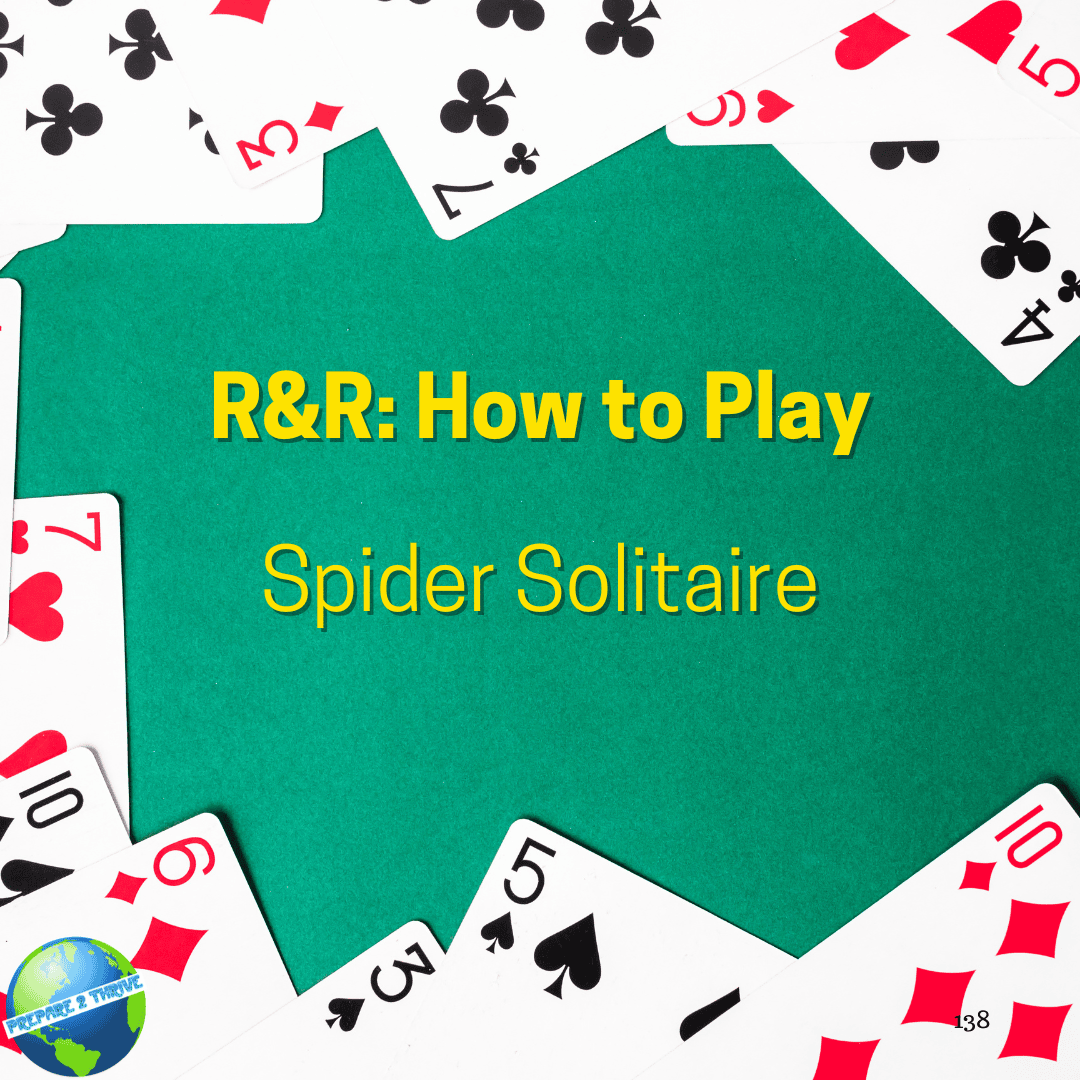Spider Solitaire is a popular single-player card game known for its challenging gameplay. The objective is to arrange the cards in eight foundation piles, each starting with an Ace and ending with a King, while following specific rules.
Setup:
- Use two standard 52-card decks (104 cards in total) for Spider Solitaire.
- Shuffle the decks and place them face down.
- Deal ten tableau columns with the first four columns having six cards each (face down), and the remaining six columns having five cards each (four cards face down and one face up).
- The remaining cards form the stock pile, and they are placed facedown as well.
Objective:
- The goal is to build eight foundation piles in descending order, starting with a King and ending with an Ace, for each of the eight suits (Hearts, Diamonds, Clubs, Spades).
Round Play:
- Cards in the tableau columns are arranged in descending order and alternating colors. For example, a black 10 can be placed on a red Jack.
- A packed sequence of cards can be moved from one tableau column to another if it forms a descending sequence of cards of the same suit.
- An empty tableau column can be filled with any card or sequence of cards.
- When a tableau column becomes empty, it can only be filled with a King (or a packed sequence starting with a King).
- If a tableau column is completely emptied, it can be filled with any King or a packed sequence starting with a King.
- You can draw cards from the stock pile (one at a time) to the tableau. The top card of the stock pile is turned face up. You can only draw from the stock pile when there are no more available moves in the tableau.
- You win the game when all eight foundation piles are built in descending order, each starting with a King and ending with an Ace.
Losing:
- The game is lost when there are no more moves available in the tableau and stock pile, and not all foundation piles are complete.
Tips:
- Plan your moves carefully, especially when creating packed sequences.
- Try to expose face-down cards by making moves that free up the tableau columns.
- Empty tableau columns are valuable for moving Kings and packed sequences.
- Use the stock pile strategically, but don't rush to draw cards if it will block potential tableau moves.
Spider Solitaire is known for its complexity and strategic depth. It's a game that requires both careful planning and adaptability, making it a beloved challenge for solitaire enthusiasts.
